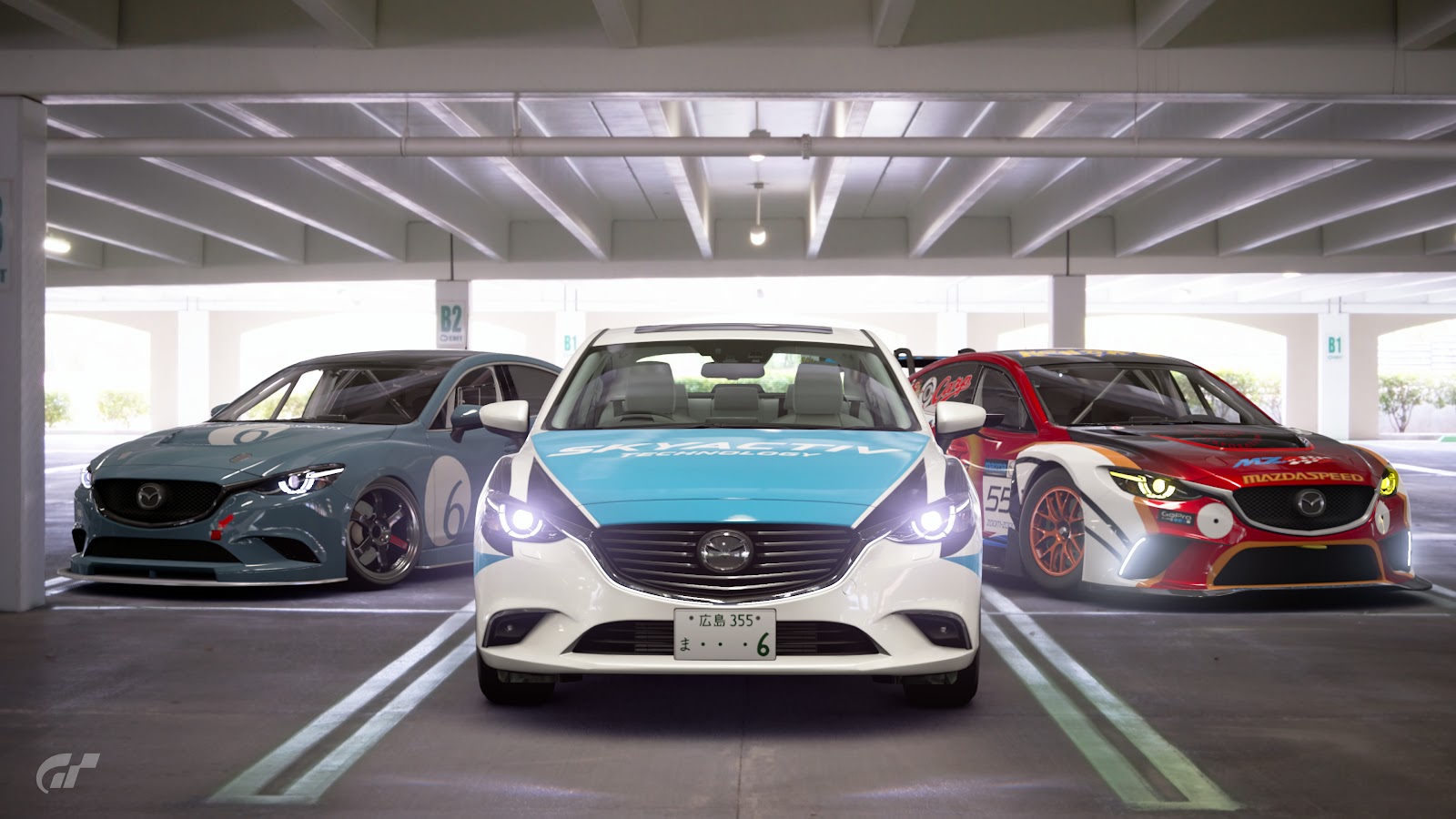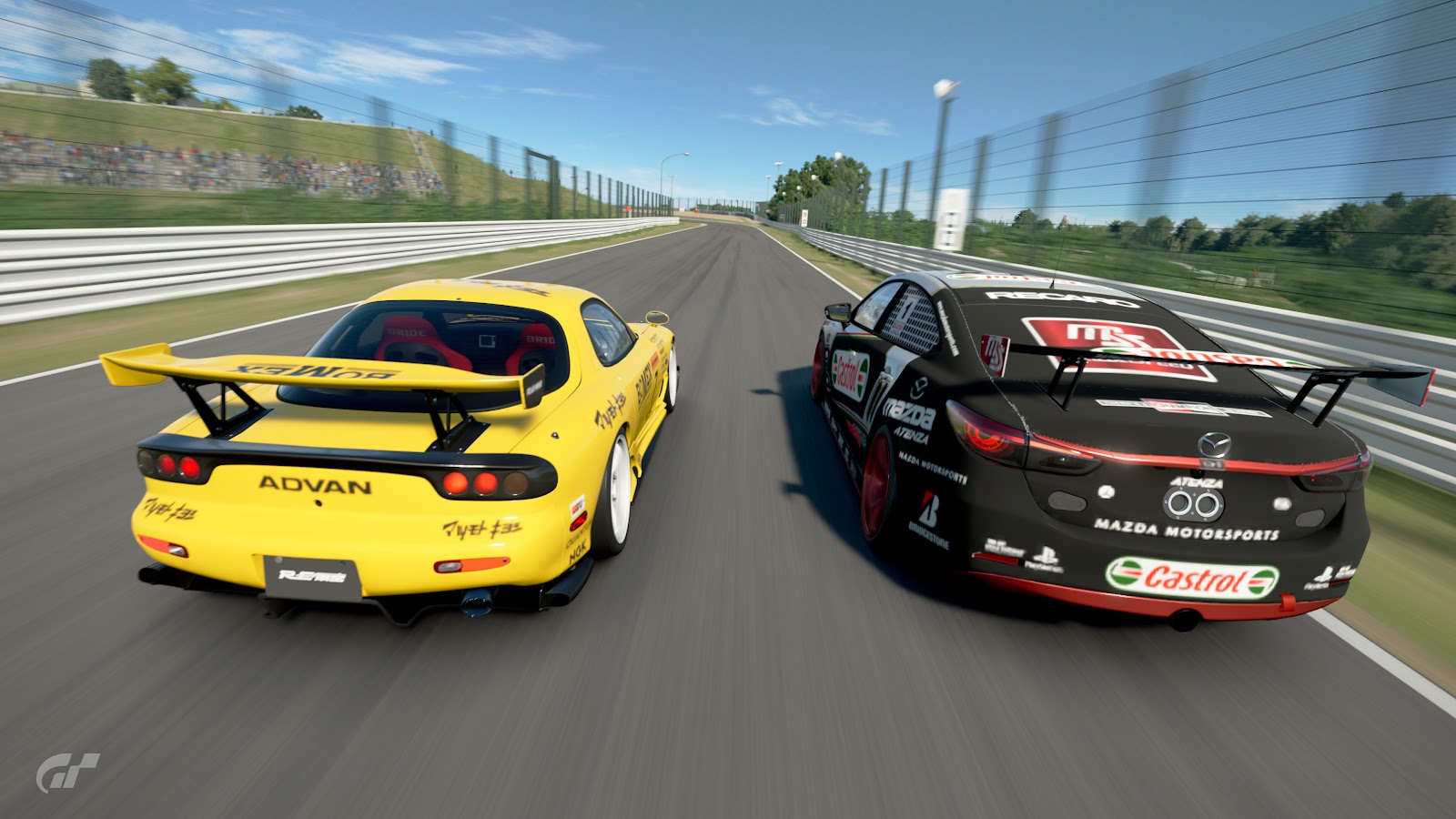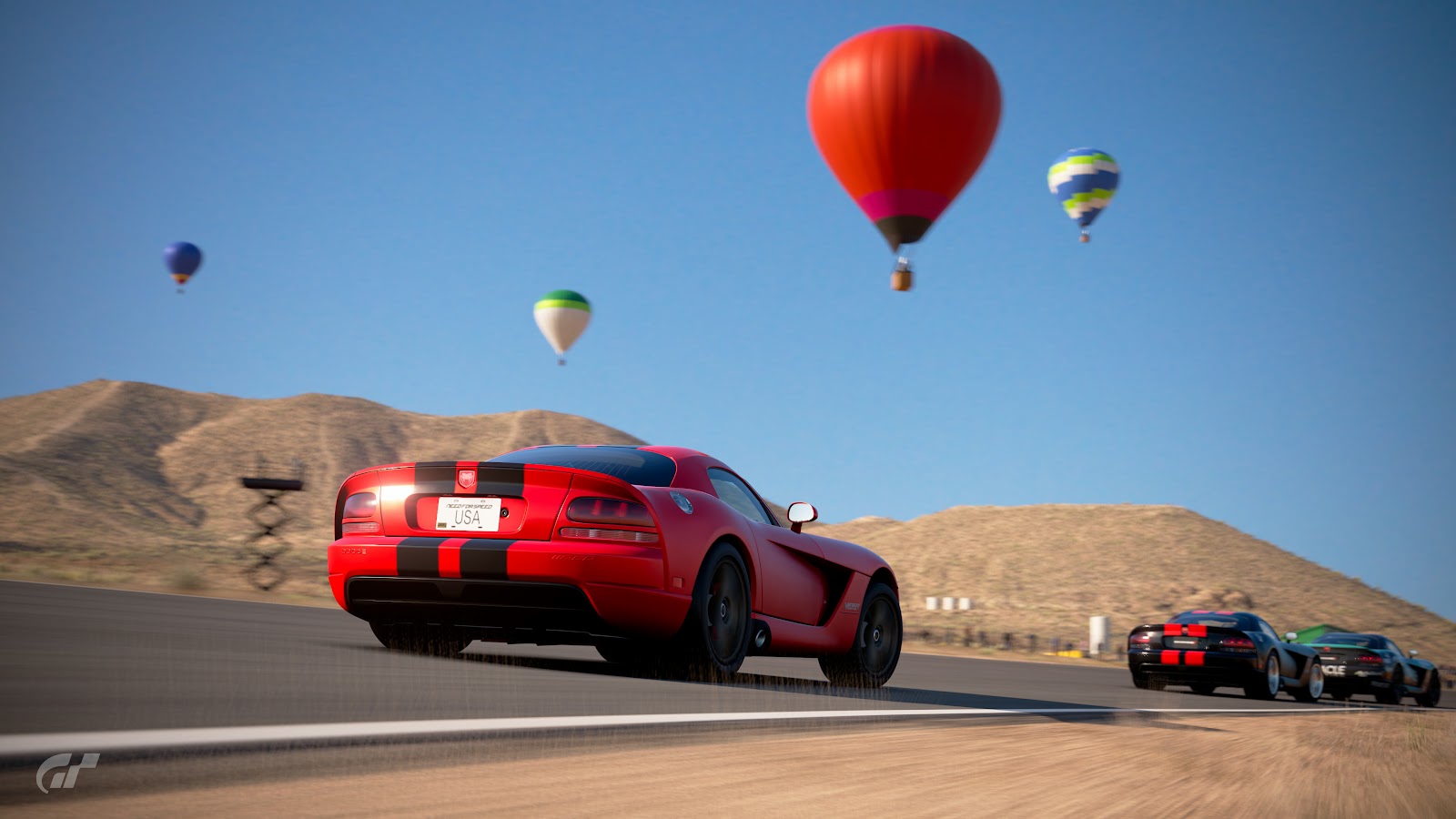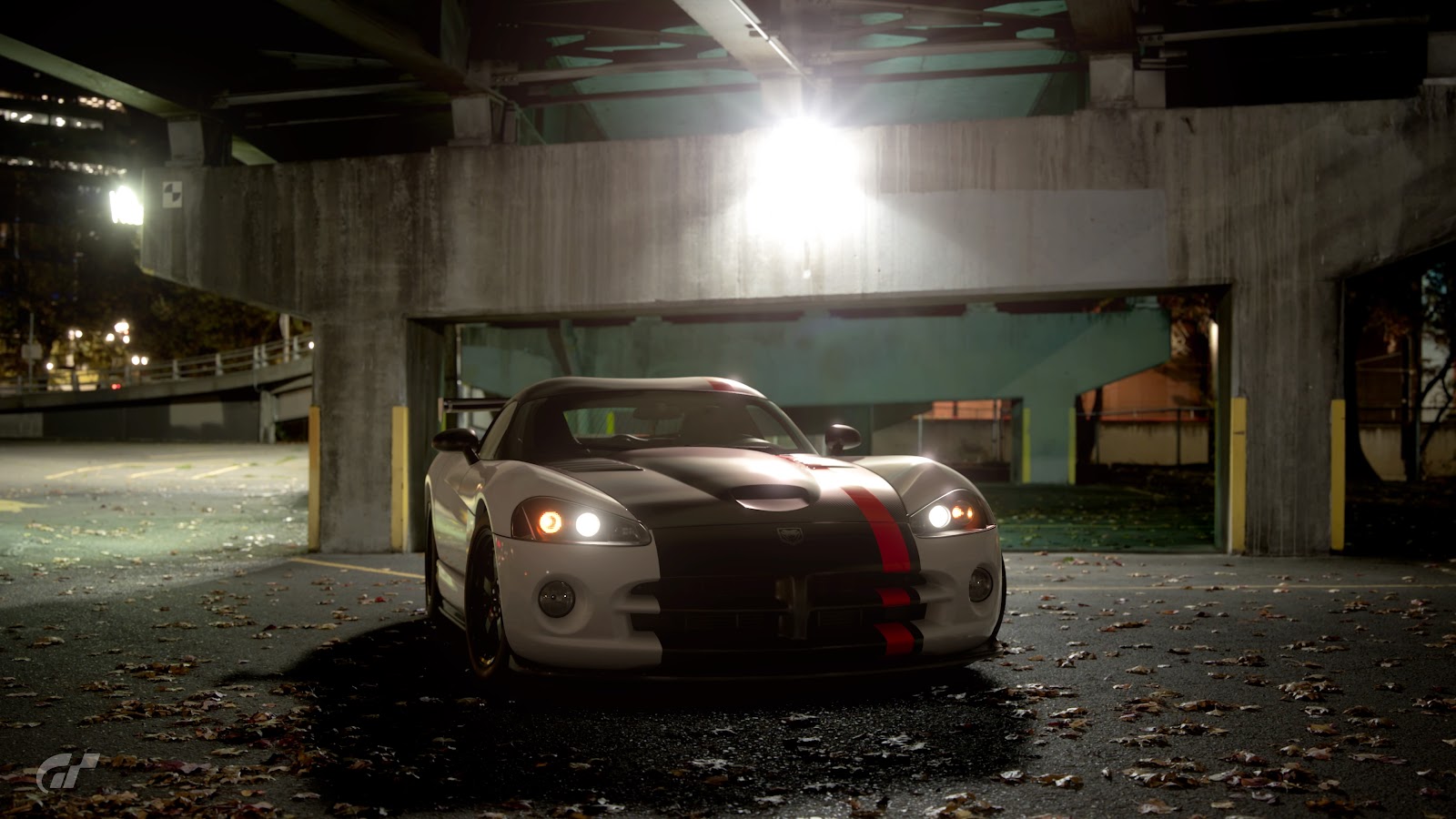Now, I've been known to be a bit cynical and critical of a guy, but put a Viper, any Viper, in front of me, and I'll simply reduce to a puddle of giggles and good vibes, because "ooh sick styling macho aggression super fun colour combos!" In case it needed explicitly spelling out, I'm a bit of a sucker for Vipers, even the least noteworthy trim of the least noteworthy generation of them, such as the 2006 Viper SRT-10 Coupe.

Old habits die hard, and perhaps that's why I like Vipers as much as I do. Just to get my usual cynicism out of the way real quick, Vipers are terrible cars by almost any metric. Attempting to daily a Viper is as against common sense as trying to shave your balls with a chainsaw; I mean, you can try if you want, and certainly no one's going to try to stop you if you do (because you're clearly too far gone for mere words to bring you back), but there are way, way more sane, apt, and ergonomic tools for the job. As far as performance goes? Well, it's got power and torque, and uh... that's... about it.
This is especially true because for some bewildering reason, players of this track focused racing game weren't given ANY of the track focused ACR models of the Viper, almost as if we're expected to take this air con and carpet equipped digital Viper to do our grocery shopping and pick up our kids from school. As such, we have "only"
508HP (334kW) to shove around 1,565kg (3,450lbs) of snake, with none of the aggressive aero, flashy carbon fibre, and adjustable springs of the ACR to help. Be that as it may, though, it's still a Viper. It still does Viper-y things.
And Vipery things are terri–effing–fying.
Yes,
objectively speaking, the third gen Viper SRT-10 Coupe is more powerful and lighter than its predecessor, the already scary
2002 GTS Coupe, by 60HP and... 9lbs, but don't let that fool you into thinking it's any easier or better to drive in any respect. It's still quite a porker by 2006 standards, and bringing the snake to a slow still requires quite a lengthy straight. This is especially so because it still lacks ABS, meaning that a lot of how well it stops is down to driver skill and how quickly they can suss out the physical sensations of the car and the road, how well they can modulate the brake pedal, allocate the friction circle, and the gentleness with which they ease it into an off–neutral braking zone. As you can probably already surmise, that's a lot of variables that ABS usually zaps away like magic, and with such an amount of variables to handle unassisted by computers while also missing the physical sensations of the real world, it's difficult to find any consistency in the braking performance of the Viper in the game, even when braking for the same corner on a different lap in the same run. I mean, you
could just leave ABS enabled as is the default setting in the game, but that'd be like asking your wife to go to a sperm bank for a kid to call your own; I have the thing, I worked hard to get it, it's mine,
of course I want to do it by myself, the way it's meant to be done, damnit! Why would I have gone through all the trouble of getting the thing if I'm not going to enjoy it myself? If this is how my queen wants me to see and treat her, then by god I will!
Once you've come to a slow in the Viper, you'll have to actually turn the steering wheel for the corner. The horror! While the 2006 Viper is (barely) lighter than the 2002, it feels heavier than its predecessor when its steering wheel is pulled off centre. This can be explained by the fact that the 2006 has 1% more of its weight over the front tyres at
49%, in comparison to the 2002's
48%. It may seem trivial in writing, but that 1% difference means that the 2006 Viper has more mass over its front tyres, despite being the lighter car of the two. Weight distribution is one of those things where I feel that even a whole percent isn't a fine enough unit of measurement, and I wish car reviewers in real life and games alike would start including decimal places when presenting that stat. Small rant aside, the 2006's front end is perceptibly more inert and less willing to slice into an apex in direct comparison to the 2002 car, and it's not like the '02 was an Elise under its snake skin to begin with; both cars lose a lot of definition in the steering wheel work to the softness of the suspension up front, and I never feel like I know what the cars are doing, where the front tyres are, or exactly how they'll react to my inputs. While I'm fine with that in the '02 because I feel that the package as a whole worked well enough, being presented with the same ambiguity and yet more unwillingness of the '06 starts to get a little frustrating for me to deal with.
Admittedly, that may be because I've over 1,000 track kilometres on my '02 Viper, often bringing it to comparison races in previous weeks, and thus I'm more used to it, but my point of the '06 car being more unwilling to bite still stands: I feel like I've to slow the '06 car more for a corner and set it up for a turn more deliberately than the '02 car if it's to bite the same apex, which causes me to have to slow earlier for a corner, bleeding over complications into an already complicated slowing procedure as mentioned before.
Once past the elusive prey that are apexes however, the '06 absolutely comes into its own; it's both more manageable and playful than the '02 car, which I've repeatedly described as wont to break your bones the moment you break its grip. Not only is it faster out of corners with its massive 60HP advantage, but it loses none of the stability and assuredness in putting down that extra power of the older snake! More than that, it adds a level of playfulness and controllability out of corners that is completely nonexistent in the '02; you can powerslide it out of corners if you want! You can control and hold a slide! The third gen Viper has a naturally aspirated V10 as all Vipers do, but it has been enlarged to 503 Cubic Inches in displacement in this third gen model, and I'm quoting the Imperial units because I think the heads of us sane metric folk will explode if that ridiculous statistic is converted into sensible speak—
eight point freaking three litres! While 508HP is still pitifully little to show for all that displacement, the real story is in the veritable plateau of torque from near idle that lets the Viper pull eerily like an EV from almost any rev range below 6,000rpm, no fuss, no questions asked. In other words, it's a car that almost begs to be hooned even in stock form. I was not at all surprised to learn from Vic that
there's a team that runs this particular generation of Vipers in Formula Drift, which his car takes after.
After the precarious chore of setting up the Viper for a corner, finally being able to give it the beans approaching a straight really gives that cheeky sensation of "Heh! This is where the
real fun starts!" I think what we traditionally consider a "fun car" is a car that has to be fun all the time, be it rowing through the gears, revving the engine, attacking a corner, or even when driving to the shops and back. A more well–rounded package, if you will. The Viper's delivery of its fun is a lot more like that of a roller–coaster or horror game: it starts slow, with a lot of waiting, anticipation, and dread. It then slowly ramps up and then crescendos in a short, unsustainable high, all the thrills and andorphins smashing you in the face to the point of asphyxiation in a condensed instant, and then it's back to the slow lull that sets up for the high again. When these highs and lows are carefully crafted, paced, and delivered, it can absolutely be just as entertaining as a whole, and so I think a lot of what makes a Viper fun depends on what tracks you're driving it on, and how they distribute and pace the lows of braking, rotating the car, and not dying, and how that balances with the high of getting on the power. It's obviously going to be miserable around Tsukuba, and no car is fun around Route X. I think something more mid to high speed like Laguna Seca and Big Willow is where the car feels most enjoyable, at least to me.
Having a Viper is what I imagine owning a nuke must be like: you like having the power. You like having the unspoken, silent, and implicit fear of onlookers at the sight of you and your posession, along with whatever respect comes packaged with the Venn Diagram. And yet, no one in that position of unbridled power really ever wants to actually
prove that they have the power, much less use it, as they themselves don't know what horrific side effects said power may have, because they themselves cannot control said power. And so most, if not all of the enjoyment comes from the stares and awe of those whom you chance by on the street as you roll up with a nuke on wheels, known only as a "Viper". And that in itself sounds like a hell of a lot of fun, something I'd very much like to try experiencing. In the many weeks after we ran this car, I often find myself fantasising about the luxury of nonchalance when driving; very specifically, of being in a moonshot overdrive 6th gear on the highway, and then simply stabbing at the NA V10 for that instantaneous torque to pass somebody going too slowly. I like having the option of downshifting with the 6 speed gearbox, but
not having to do it. It's so fundamentally different from driving an automatic gearbox, even if I'm not actively shifting either car. It's just endless affirmation and constant theatre, and it makes me ultra sad that I will probably never get to experience that for myself in real life.
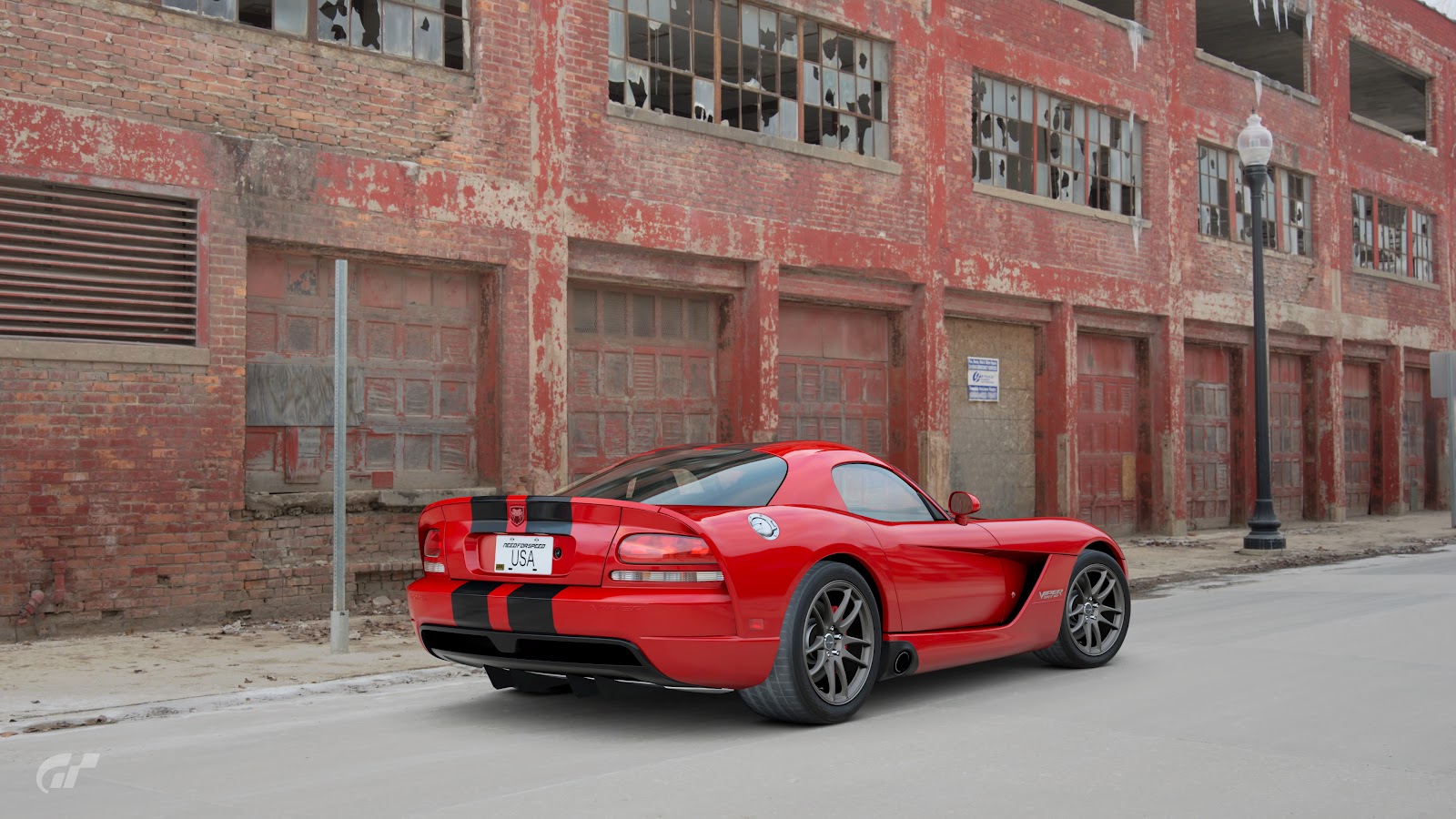
Because I as its driver have a very healthy fear of it despite the virtual divide, driving the 2006 Viper hard on the track in a video game oddly evokes a very familiar feeling of driving in a dense city during peak hours that is my real life job; you don't really have much of a say in how fast you can go, as the pace has already been set for you; all you do as a driver is to simply keep the car going within the space given to you, chugging it along at a predetermined pace. Just as is with driving in a congested city, driving a Viper hard on the track often often means that driving "slowly" and patiently within said limits is just as fast as, if not faster than trying to be gung–ho and forcing the issue. You ever meet an inexperienced and hot headed driver on the streets who evidently can't read the situation or see a little further ahead? They weave in and out of traffic, cutting everybody off in their obnoxiously loud car, while trying to get to their destination as quickly as possible. Meanwhile, you let them do their thing while you drive safely and responsibly, only for you to line up right next to them at the next red light, mentally thinking to yourself, "why hello again, fancy meeting you again here, thought you were in a rush?" That's oddly what it feels like trying to drive a Viper fast on a track; push it too hard to do something it plainly does not want to do, and it will bite off a limb of yours at minimum.
It decides how fast it wants to go, and you simply sit in the space it graciously allocates you and think to yourself, "it's okay big guy, you go when you feel like it", and trust that it will be done. What I've found to be just as quick and efficient, while being way safer and less stressful, is to almost under–drive the car, not pushing its limits, and oftentimes I found that such reserved driving let me keep up with my peers trying to find and push the limits of the car. It's a car that's faster at 8 tenths than it is at 10.2 tenths, if that makes sense. The Viper's handling limits are as absolute as a red light, or a collection of idiots perfectly blocking all lanes doing the exact same speed as each other. Getting close to these limits is a nauseating task, and exceeding them is a costly and painful prospect. Despite what 508HP and 725.2Nm (534.9lb-ft) of torque might tell you, the driving experience of a Viper really teaches one patience and weighing one's options before executing them, because, to quote the snarky Vic, "When it comes to Dodge Vipers, regardless of which one you drive, one thing is constant. You're one slip up away from it turning around and biting."
And that's exactly why this piece has taken me so long to write, because so much of what I say about a particular Viper applies to
any Viper. They're cars that have ardently stuck to a formula, "only" improving upon it through the generations instead of completely changing it. In any other context, that might sound lazy, inert, and narrow–minded, but some of the best cars we've known are exactly like that, such as the Mazda Roadster and Honda NSX. That is to say, I believe simplicity is the single greatest ingredient in a sports car, and you don't get much simpler than a big F–off NA engine driving the rear wheels of a 2 door coupe through a six speed stick. We as enthusiasts say we want manual gearboxes. We say we love big NA engines. We revere RWD as though a religion. The Viper gives us all of that, but for some odd reason or another, nobody seems to want one, and we let it die as a result.
...all of which leads me very nicely to the last road going Viper in this game I haven't reviewed, the 2013 Viper GTS. Time to fix that before we move onto GT7, I think!
Dodge Viper GTS (15th A.E.) by GTP_RACECAR livery link (GTS)
It's a Viper, so you already know what you're going to get: long hood, short deck FR, manual gearbox, absurd power, and terrifying handling. But, the final generation of the Viper has a big change mandated onto it: it now has ABS and traction control to go along with its air con and locking doors! The question is, have the electronic nannies neutered and de–fanged the Viper?
Hah! As if!
Crude and rowdy Vipers have always been a nostalgia capsule on wheels. While the original Viper that debuted in 1992 was a throwback to the AC Shelby Cobra of the 60s, the final Viper that bowed in 2013 feels like a throwback to cars just a decade past, perhaps a testament to just how fast we advance as a society nowadays that even throwbacks to a decade ago can be worth dollars and cents when marketed to. The 2013 Viper, with the begrudging addition of basic electronic aids, really reminded me of some of the last manual supercars of the early 2000s, such as the
Audi R8,
SLR McLaren, and, dare I say it, my childhood dream car, the
FD RX-7, in that it is only you as a driver in control of the car, and not much else. Modern supercars have become inaccessible not just in terms of price, but also in how utterly and absurdly convoluted their computer assisted handling has become, chasing numbers in ways I simply don't understand as a driver; I haven't liked a single modern supercar we've tested, because I as the driver always felt like the only part of the equation that didn't understand what the package as a whole wanted to be and do. In these early 2000s supercars, and indeed the 2013 Viper, I never once felt that. The cars were an open, blank book, into which I could write my own story and infuse with my style. I never once felt that slap of, "no, that's wrong,
stop doing that, WTF man, that's not how I'm meant to be driven, how do you not know that?" that I always get from modern supercars.
One car from the early 2000s it does
not resemble however, is, ironically enough, its own older sibling, the 2006 Viper Coupe I wrote about earlier. While I've described the on track driving experience of the '06 car to be akin to a roller coaster ride, the '13 car has much more proportionate capabilities, cutting out the lull and wait of the roller coaster and making it so that the car is
even more fun, all of the time! In other words, the '13 Viper is a car I genuinely enjoy tackling corners with. Unlike the '06 car that is clearly bottlenecked by its own mass, I never once got that feeling that any one component of the car, be it the brakes, tyres, suspension, mass, or powertrain, was the limiting factor in the '13 car. The whole car felt cohesive, well balanced, thought through, and put together with the love for driving in mind. And that's usually praise I reserve for underpowered Japanese crap boxes from the 80s and 90s.
So, it drives well then? Is it not scary anymore? And why do I compare it to an FD RX-7, a handling messiah, of all things?
It's a weak conclusion to draw from just having three of the five generations of Vipers in the game, but I feel as if Vipers have slowly gone from plain terror to playful horror as they evolved through the decades. All of them are still scary, but their brands of horror are different... if that makes sense. If an early Viper did me in and someone in the afterlife asked how I wound up there, I highly suspect the answer will be, "I dunno, the car just got away from underneath me". In the final Viper though, I very much think I would be beaming as I reply, "I pushed the Viper too much and it finally bit me back. 10/10 would do it again." The 2013 Viper GTS may have absurd power and electronic aids, but what it doesn't have is stalactite stiff suspension or the downforce to mash it into powder, which are nothing short of requisites in the sickeningly popular hobby of car manufacturers nowadays: chasing numbers.

What that translates to in practice is that the rather soft Viper isn't nearly as immediate to respond to the every twitch of your extremities as one might expect from a modern performance car, but still has good cornering speeds once its weight shifts fully and hunkers down on its gargantuan tyres, given that it doesn't try to railroad its driver with hand–holding understeer like most modern supercars. It's almost surreal to feel weight shift in a modern supercar, and the Viper very much necessitates that its driver be acutely aware of that weight shift and manage it, lest all that travelling weight snaps and spins out the car—something that most manufacturers don't have the balls to subject their customers to. Because the Viper engages the driver and gives them the tools to play with it however they please, it doesn't feel like it's forcing me to drive in any given way, with some real flexibility, playfulness, accessibility, along with all the associated dangers of such a package, and is an intensely engaging drive because of it, almost as though it were an enlarged RX-7 or S2000. It even has a perfect
50:50 weight distribution to that end, despite packing a humongous 8.4L V10 up front!
But, in the middle of horsing the snake around, one has to remember that, ultimately, this is a car with
640HP (477kW) and weighs 1,556kg (3,430lbs), and there's
probably a good reason why cars with the power of the Viper GTS aren't set up like the Viper GTS. In an FD RX-7, if you slid it, you could catch it, and with only 300HP, the speeds you'll be doing means that the slide builds up slower, the less grippy tyres let go with more transition, and you'll have plenty of opportunities to catch it. In the Viper, you can still play with it, but the speeds you'll be doing will be so much faster, and the fatter tyres let go with much less warning, and thus you have to catch it
that much faster as well if you want to poke it for fun. Doesn't mean you can't, it just means you had better be on it like a hawk if you do, and that's a lot more than what can be said for most modern supercars, one of which we tested very, very recently, which has left such a bad taste in my mouth I'm having to wash it out with the Viper.
Yes, of course it's a terrible car. That's... almost the point of a Viper. But it doesn't pretend to be anything else. How else do you think a Mazda Roadster can get away with having only 120–ish HP for three decades? People who buy it know what it is, what it can do, and what it can't. You don't buy a Viper because you want to be able to slice into a corner with Cayman GT4 levels of poise, balance, precision, and control; you buy a Viper because, lol, it's a Viper! It will never give that feeling of cohesive dancing on the knife edge of adhesion a lighter and more poised sports car will give. The numbness of the Viper in the corners means that it gets all its pace on the straights. It is a sheer display of dumb brute force, and not even the "bludgeoning someone to death with a hammer" kind of dumb brute force, because that would imply a knowledge on how to correctly wield and utilise a hammer to one's mechanical advantage. Rather, the driving experience of a Viper is more akin to a "fill a sack with hammers and then throw that sack around to bludgeon others into submission" kind of dumb brute force. Instead of trust and understanding, the relationship one has with a Viper is rooted deeply in fear and respect, of self restraint and knowing one's limits. And yes, because of this, it might be out–duked in the corners by other cars of its era. But come the straights, and the Viper simply sails past with no fuss. Sometimes, it's the simplest solutions in life that are the most elegant. Sometimes as an adult, when life gets the better of us, and things fall apart in our hands in spite of us trying our best, it's really reassuring to have a simple solution to make it all go away at the end of the day, be it a loved one, alcohol, or a Dodge Viper. The Viper, in its own odd brand of benevolence, can give that sense of relief... sometimes.

As a grown–ass adult who pretends to test cars and critique them, what really resonates with me about Vipers aren't its paint choices and stripe options, nor is it the specs and numbers of the car. Rather, it's that sense of brutal honesty that really strikes a chord with me. The Viper isn't afraid to piss people off. The people who make it know it isn't for everyone. It's coarse, it's in–your–face, but it's also brutally honest. It's precisely that honesty that I find so refreshing not only as an adult in a nigh–dystopian society, but also in the automotive industry as well, with brands chasing trends and selling us electric SUVs pretending that that's always been their passion and forte. That honesty is exactly what I strive for in my writing. I don't have to kiss ass because I'm not writing for any purpose other than to have fun myself, and if others happen to enjoy it as well, then that's just a nice bonus. I would keep writing even if nobody read my crap, because it is my escape, much like the Viper is an escape from the trends of the industry and the harshness of reality. It is something that makes zero sense on paper, but I keep coming back to it, akin to junk comfort food after a hard day in the office; I know it's not good for me, but
it just works and I don't know why! It speaks to my inner child so fluently and eloquently that I can't help but to be bewitched by it and continually chase after it. Part of why this piece has taken as long as it has to come out is that I keep going back to the Viper, and by extension, to this piece. It's very hard for me to find a strong conclusion to draw for this piece of writing, partly because I never want to be done with it. The Viper is just a big part of my life, and it's hard to find a point where I can tell myself, "enough is enough, just cut it here and pump it out already!"
I want to feel like a kid again. I want to be able to throw away every responsibility and just act like a child once in a while. I want to have a car that I take one look at and start giggling at the absurdity of it all, and I want to do this for decades on end. Aside from two specific dream cars I've idolised since childhood, no other car acts as a gateway into that world as proficiently as a Viper, and all I have to do is to
look at it for it to bring me places. Maybe that's why it doesn't need build quality or ergonomics.

